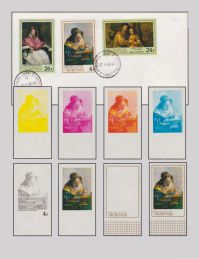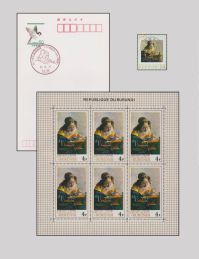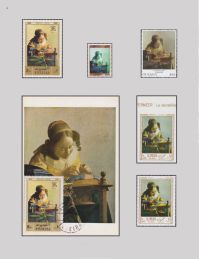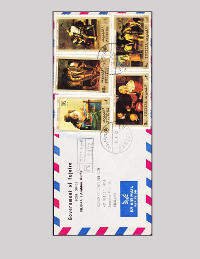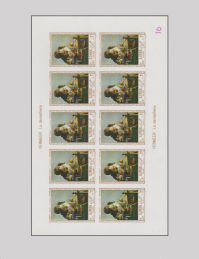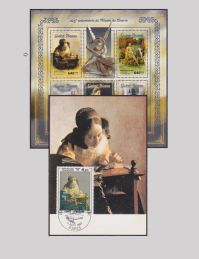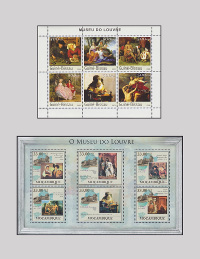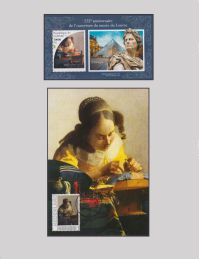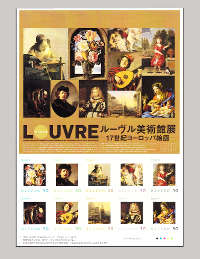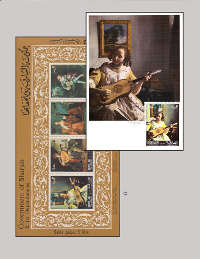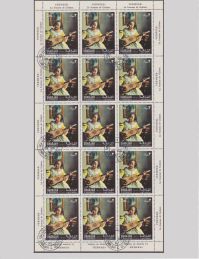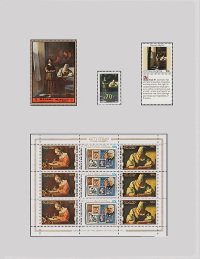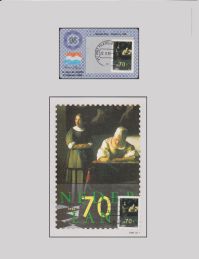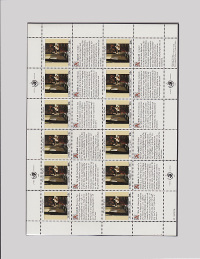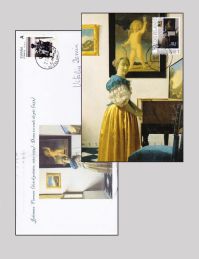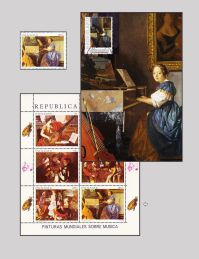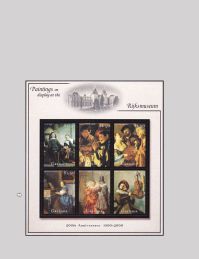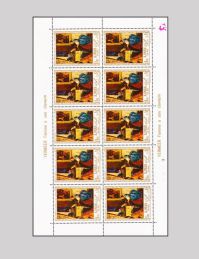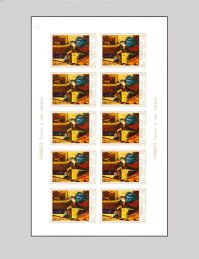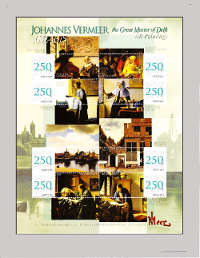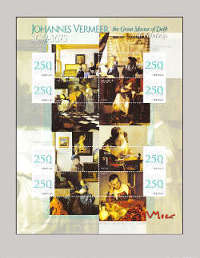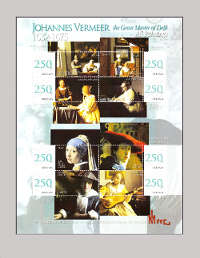How to consult this collection
Click on the images below to access an enlargement and description below of each group of stamps.
Each page of the Demin collection usually has a dominant painting. Pages are designated with two numbers, such as "7-2." In this case, the first numbers refers the EV catalogue number of dominant painting, while the second number the sequential number of the pages dedicated to that work. Thus, the number "7-2" refers to the second page dedicated to The Milkmaid. When one painting has more than one page dedicated to it, the most valuable stamps, from philatelic stand point, are placed first. For example, French stamps with The Lacemaker are more valuable than from Burundi or Fujeira and therefore are placed first, unless they issued recently.
Stamp collecting has been one of the world's most popular hobbies since the first postage stamp was introduced in 1840. It is an almost perfect hobby because the great variety of available items can please collectors of any age and financial means, from grade schoolers to members of the royal family. Some members of the royal family are known to have been collecting stamps by 1864. The first serious collector in the family was Prince Alfred, who sold his collection to his older brother Edward VII, who in turn gave it to his son, later George V. Since the 1890s, successive monarchs have employed curators to assist with the management of the collection. By 2012, six men had taken on this responsibility.
The first depictions of art objects and paintings on stamps date back to the 19th century. They consisted mostly of monochrome engraved portraits of monarchs and famous people. In the 1940s and 1950s, reproductions of drawings and paintings on stamps of many countries became widespread, and by the 1960s and 1970s, high-quality color stamp sets with reproductions of well-known masterpieces were being issued by many countries on a regular basis. Collecting art on stamps became very popular, and since that time the market has been flooded with new issues.
A collection consisting solely of stamps looks quite bland. There are other collectible items that will give a collection a better appeal and individuality. Below are descriptions of such items that are popular with stamp collectors.
- Souvenir sheets – one or several stamps printed on a single sheet of paper, often without perforations and with a wide margin containing a text or design that is dedicated to a particular event. Various parts of a souvenir sheet can be torn out and used as postage stamps.
- Sheetlets – small sheets with 20 to 24 stamps issued with a large border that may include a part of the stamp design or theme.
- Miniature sheets –very similar to souvenir sheets and contain a small group of postage stamps printed together on one sheet.
- First day covers – (FDC) – envelopes with stamps attached and canceled on the first day those stamps went into circulation. The FDCs with specially designed envelopes, related to the theme of the stamp issued, are called "cachets."
- Maximum cards – postcards where the stamp is placed and canceled on the same side as the picture. All three elements: card, stamp, and cancellation must bethematically related.
- Postal stationery – includes postal cards, aerograms, letter cards, wrappers, envelopes, etc., that have a legitimate stamp printed on them.
- Special cancellation - is the imprint on the postage stamp that invalidates it against future use that was deigned to commemorate a particular event. Special cancellations usually applied for a limited time or just one day like in case of Firs Day of Issue of a particular stamp.
More than a thousand stamps currently in circulation are dedicated to the works of each famous artists such as Leonardo, Raphael, Michelangelo, Rubens, Rembrandt and many others. It is almost impossible to collect all of them, and one has to pick and choose in order to assemble a thematically coherent collection. Vermeer, one of the most intriguing artists in history, is an ideal candidate for a small collection. I compiled a complete list of all the stamps with Vermeer’s works that are in circulation all over the world, and even with all the perforated/non-perforated varieties, it was fewer than 200 items. It took me about a year to acquire all the available items except a few non-perforated varieties which I will add later. I have been visiting www.essentialvermeer.com for a long time and was fortunate to work with Jonathan Janson to be able to offer this aspect of Vermeer's legacy to your attention.
Vitaliy Demin
